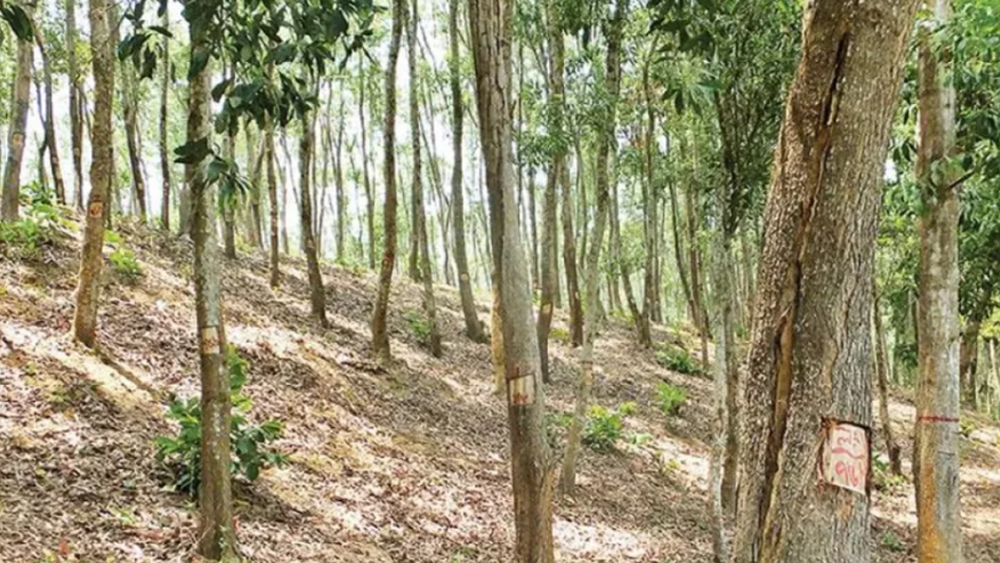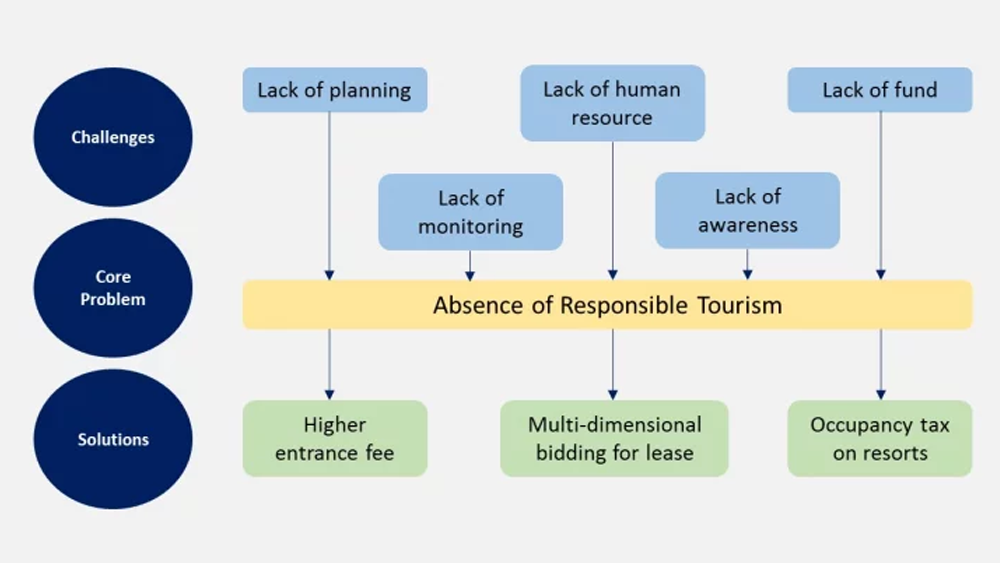Study highlights recreational value, ecosystem health of Sal forests in Bangladesh

Dr Naeema Jihan Zinia and Dr Md Abdur Rahman Forhad
Publish : 02 Jan 2024, 07:26 PMUpdate : 18 Jan 2024, 12:47 PM
---
A study highlights the recreational value of Sal forests and offers solutions on how they may be managed to provide better recreational services while preserving natural beauty and ecosystem health.
The study was commissioned by the USAID-funded and US Forest Service-implemented Community Partnerships to Strengthen Sustainable Development (Compass) Program and focused on areas in the Gazipur district, such as the Bhawal National Park and privately owned resorts, according to a press release issued on Tuesday.
The Sal forest near Dhaka is one of Bangladesh's most attractive tourist destinations and is home to the Bhawal National Park. This forest is a habitat for a variety of animal and plant life.
The lush green landscape and serene ambiance attract many city dwellers who want to escape crowded and polluted cityscapes and experience clean air, open space, and natural beauty.
Being close to nature reduces mental stress, improves physical health, offers social interaction opportunities, and ultimately contributes to a higher quality of life.
Sal and other such forests also provide several unseen benefits, such as filtering water, preventing erosion, and buffering against climate change.
However, Sal forests are constantly threatened by the expansion of industrial zones, land grabbing, and unauthorized logging that compromise the health and extent of the forests.
At the same time, tourism has grown in and around the Bhawal National Park in recent years. Though the national park provides recreation opportunities like bird watching, nature walks, lake boating, picnics with friends and family, camping, and staying overnight in cottages, there is concern that tourist amenities often do not meet the standards of visitors, especially compared to private resort amenities.
Special attention is urgently needed to sustainably manage the Sal forests to maintain their natural beauty and ecosystem services to society.
Understanding the economic value of recreation helps government agencies and society to decide how to meet tourism demands in a way that best manages forest health to ensure long-term benefits to people.
To this end, the current study collected information from more than 400 visitors and 25 private resort informants interviewed between 2022 and 2023.
Almost 90% of the visitors interviewed came to the Sal forests from Dhaka city for recreation, and 75% had visited at least once before. More than 95% of the surveyed visitors believe that Sal forests in Gazipur are an excellent place to visit, especially the Bhawal National Park.
Visitors there stated they felt the air quality was comparatively fresher inside forested areas than in the city.
Findings from the study clearly show that Sal forests have significant economic importance and that tourism amenities positively attract tourists. The monetary value generated by tourists visiting the Sal forests was estimated to be Tk573,916 per hectare. Approximately 76% of respondents showed interest in paying more for improved facilities and forest habitat conservation to attract more animals and bird species, which they want to see with their family and friends.
Tourists pay more to stay in resorts surrounding Sal forests, where natural beauty can be enjoyed with comfort, luxury, safety, and security. In contrast, most visitors expressed disappointment in public areas, specifically with safety and security levels and conditions of the amenities, such as walkways, seating areas, watch towers, restrooms, and playgrounds.
They also desired better internet availability and cleanliness and mentioned that the noise from the Dhaka-Mymensingh highway was too loud. The study observed that overall, the area is generally lacking in planning for nature-based and tourism-centric facilities, especially in the form of human resource support to monitor and maintain facilities.

To address these core problems and generate maximum utility from the forest ecosystem services in terms of monetary value, several solutions based on data and findings are available. These solutions are designed to help inform planning and funding decisions in a way that maximizes benefits to tourists, communities, and ecosystems.
Higher entrance fees
The first solution is a simple adjustment to the entrance fees charged to visitors. Survey participants responded that they would pay more for improved safety and security conditions, cottage facilities, watch tower access, scenic drives, and high-quality package tours.
For example, more than a third said they were willing to pay a Tk200 entrance fee (compared to the existing Tk20 fee) for adding a set of security posts along walkways.
Importantly, our analysis also indicates that the number of tourists will decrease if the entrance fee increases. The trade-off is between earning more revenue with fewer visitors and improved services versus earning less with more visitors and existing services.
The authority could decide on the optimal carrying capacity for the low and high tourist seasons by adjusting fees as necessary, thereby lowering tourist pressure while improving amenities.
Multidimensional bidding for lease
Currently, some of the facilities offered in the Bhawal National Park are leased out to private entities to manage the entrance, cottages, washrooms, and boating, usually for only a year. Entities are selected through a competitive bidding process that is only based on the highest bid.
As an alternative, a “multidimensional” bidding system could be introduced that includes more criteria for winning a bid, including economic, social, and environmental considerations. Weights can be assigned to emphasize environment-friendly options.
This approach is ideal for longer-term contracts, which would be legally binding and include clear clauses on deposit for damages or services not delivered and other exit/termination strategies.
Occupancy tax on resorts
If there are “too few” resorts, the economic value of the Sal ecosystem’s beauty would be only partially realized. If there are “too many,” the environmental, economic value falls. There is a need for balance in order to achieve sustainable development, and conservation efforts need to be funded to enforce zoning and keep contiguous Sal forest areas in good condition.
With environmental occupancy taxes, a virtuous circle can be created: funding conservation generates more taxable economic value from resorts, and these tax revenues allow governments to keep investing in maintaining Sal forests. Where there is growth of resort sites and more people that negatively affect forest health, the optimal tax could be larger than in other sites.
This policy instrument should be supported both as a revenue generation and an incentive for sustainable tourism.
Their research generates important inputs for public policy design and decision-making. It provides an economic valuation of Sal forest ecosystem services, the benefits of forest protection, and a means for comparing the costs of forest protection.
The findings are also useful for informing the development of policy instruments that can increase the value of the Sal forest, help manage the use of its resources, and do so in such a way that lower-income households and small businesses do not lose, rather gain, from these policies. If not properly protected, the natural beauty of Sal forests would be short-lived, and so would be the economic activity generated by it.
The proposal is to implement the above solutions in a policy that channels the economic strength of nature-based tourism back into the conservation of Sal forests.
Dr Naeema Jihan Zinia is a Research and Global Exchange Fellow, Compass Program, US Forest Service; Dr Md Abdur Rahman Forhad is a Professor of Economics, Dhaka University of Engineering and Technology
SOURCE: Dhaka Tribune
